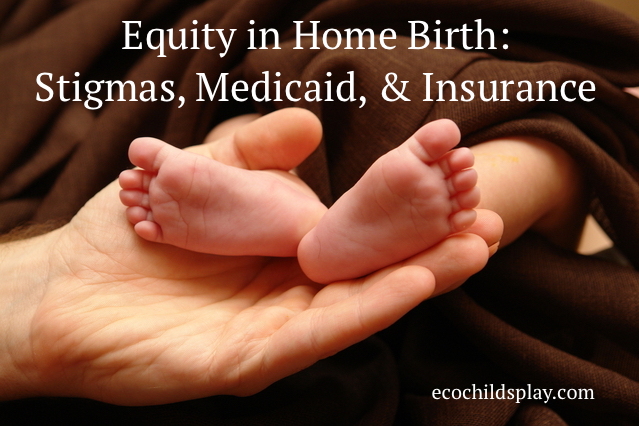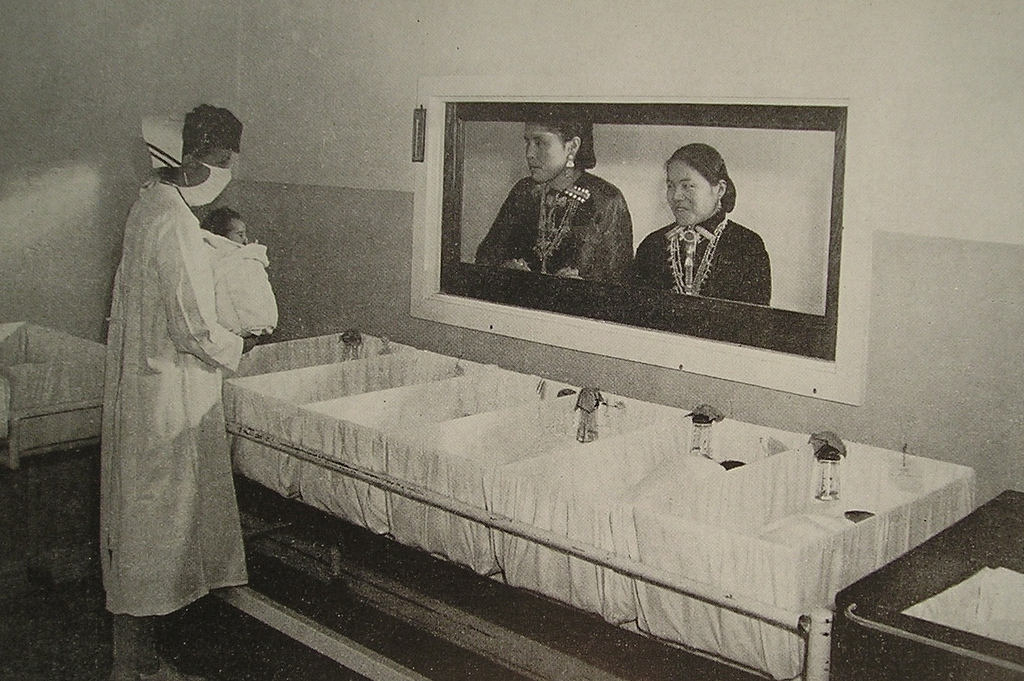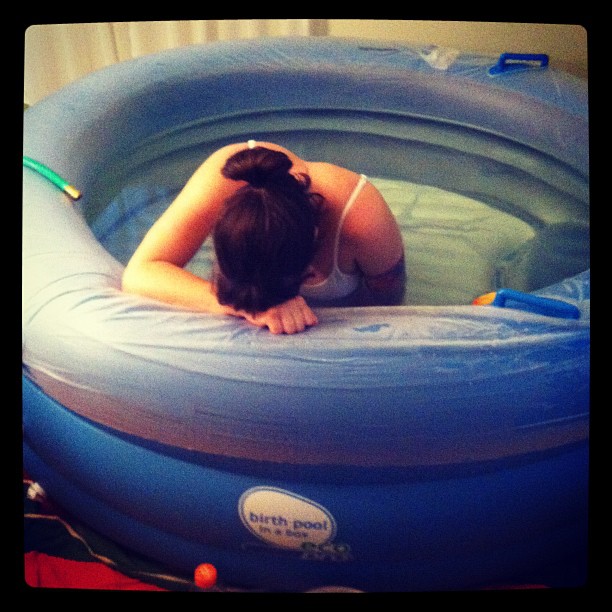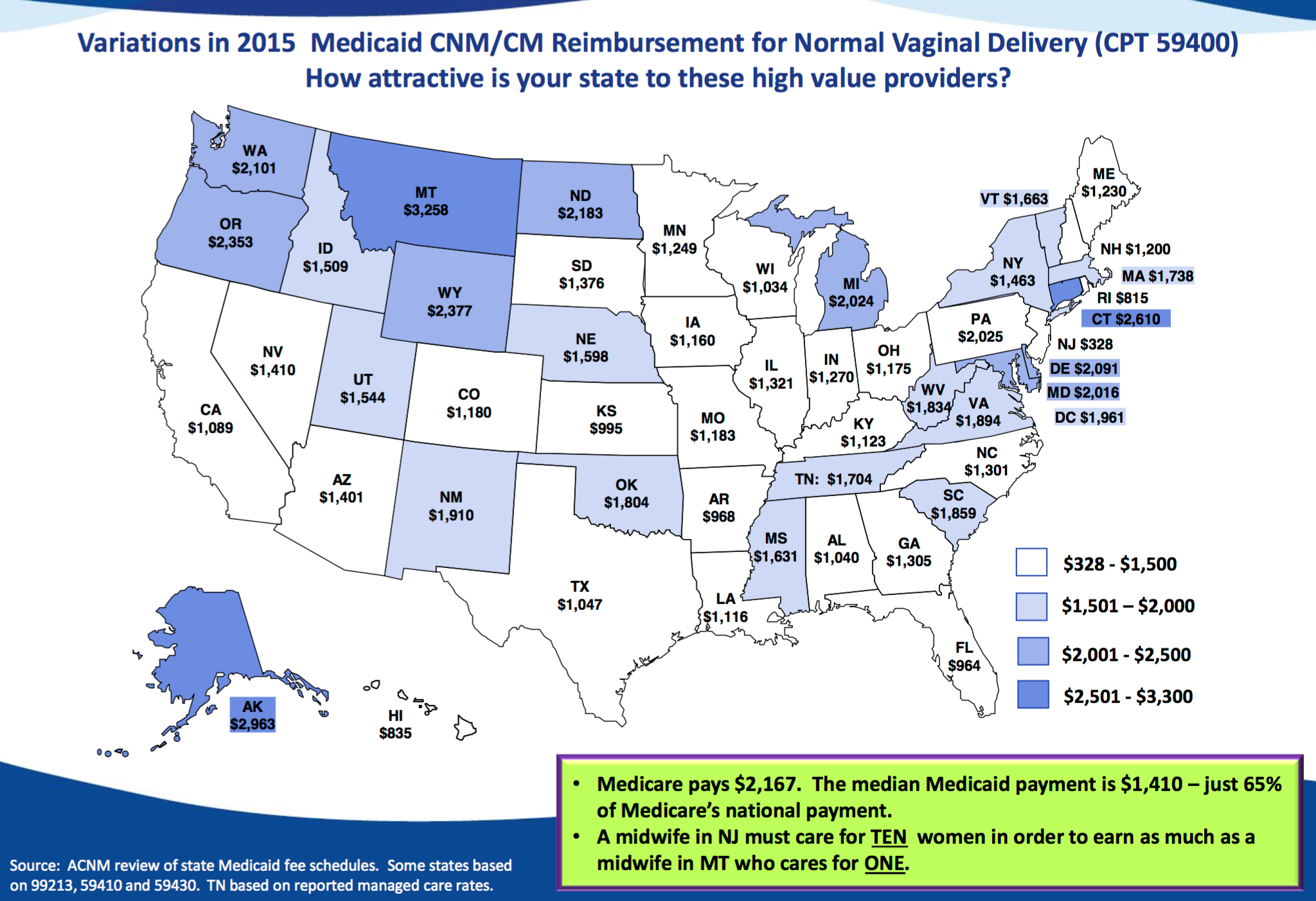 Both my children were born at home. I have several friends that are midwives. I believe all women should have access to quality home birth care if that is their choice. Yet there is a huge inequity in home birth rates largely due to stigmas, as well as Medicaid and private insurance denials. Of particular concern is the accessibility of home birth to women of low income.
Both my children were born at home. I have several friends that are midwives. I believe all women should have access to quality home birth care if that is their choice. Yet there is a huge inequity in home birth rates largely due to stigmas, as well as Medicaid and private insurance denials. Of particular concern is the accessibility of home birth to women of low income.
Image: FreeImages.com/Aneta Blaszczyk
For women of my great grandmother’s era, a home birth was often a choice made because of their rural location or inability to afford a hospital birth. Hospital births became a status symbol, a sign that one could afford a “pain-free” hospital birth with anesthetics and doctor’s assistance.
Photo credit: bunky’s pickle via Foter.com / CC BY-SA
Rutgers University professor Margaret Marsh explains:
“In the colonial period, all the way up to 1760 or so, there was no real challenge to midwives delivering babies,” explained Marsh. When a woman was ready to give birth, her female relatives, and friends would help her through the process, along with a midwife.
“But, it was a scary process, babies died, women died, having a baby was a frightening thing,” added Marsh. She says that around 1760, upper class women started to want to have doctors at their births. They thought that because the doctors had more education they could deliver a safer birth. Doctors delivered babies in women’s homes, and doctor-assisted births became more popular over time. “In 1900, about half the babies were delivered by midwives. By 1935, only fifteen percent were delivered by midwives,” said Marsh…
The shift to hospital births started in the 20th century. “What happened in the beginning of the 20th century was anesthesia for delivering children, and they wanted to have pain-free childbirth.”
But Marsh says the outcomes for women weren’t that great. “Lots of complications, lots of infections, it didn’t have the effect that women desired. They wanted safer, less painful childbirth, but in the first third to half of the century, it was not always safer childbirth.”
Marsh explained that in the 1930s, most of the midwives were practicing in rural areas, and were often called “granny midwives,” people who learned their trade on their own. “It did seem for a while as if midwives were going to become obsolete. The 1940s, 50s and 60s, you get doctors, especially obstetricians delivering all the babies.” Marsh says the feminist movement of the 1970s revived women’s interest in midwives. “Women once again wanted to control their own childbirth experience.”((http://www.newsworks.org/index.php/local/the-pulse/62906-how-did-birth-move-from-the-home-to-the-hospital-and-back-again))
Ironically, the access of home birth versus hospital birth has shifted economically. Now the affordability of a home birth puts it out of reach of many families.
Equity in home birth: Who can afford a home birth?
This is not a debate about the safety of home birth but its accessibility to all women.
I have had two home births. The first one was paid for by the health insurance I received from my employer. My second home birth was paid for out-of-pocket. Why the difference? I was no longer working full time for child rearing and thus qualified for public health. It did not cover home birth then.
Photo credit: Jason Lander via Foter.com / CC BY
Why do we deny the option of home birth to low-income families? Is this legal?
In Oregon, nearly half of all pregnant women are on the Oregon Health Plan (OHP). If a woman wants a home birth she has to apply for an “Open Card”. Many of these requests are being denied or are “pending”. Pending doesn’t work when you have a due date. Jefferson public radio explains:
Hermine Hayes-Klein is a Portland lawyer and founder of Human Rights in Childbirth, a global non-profit. She says Oregon is one of the states with the most secure access to out-of-hospital birth.
“Oregon midwives worked for many years with the legislature to become legal, to make sure that women could have secure, above board, legitimate access to out-of-hospital birth and to midwifery care,” she says…
The problem, Hayes-Klein believes, is that the Oregon Health Authority is denying women access to out of hospital birth for unfair reasons.
“Certain choices are perfectly legal for women to choose and for midwives to support but OHP is arbitrarily refusing to cover those choices anymore.”
That was Jade Bounce’s experience.
“They didn’t give me a medical reason for denying the open card,” she says. “It seems that they pretty much just didn’t want to cover home birth.”..
Another mom was denied for “the convenience of the provider of treatment.”
Augustine Colebrook, a veteran midwife who owns Trillium Waterbirth Center in Grants Pass, says these kinds of letters are typical…Colebrook says a third of her clients on OHP were refused coverage for out of hospital birth. She finds these denials baffling…
Though Jade Bounce was denied insurance to cover her home birth, she didn’t have her baby in the hospital. Bounce gave birth to Ivy in a cabin in Talent, up a winding dirt road, with the help of a midwife. It cost $3,000.
“I paid out of pocket,” Bounce says. “I had to. And I’m lucky that my midwives were so nice.”((http://ijpr.org/post/denied-home-birth-put-out-reach-many-low-income-moms#stream/0))
Photo credit: ::: M @ X ::: via Foter.com / CC BY-NC-ND
In other situations, women have used gofundme to raise money for their home births; however, this again seems to create accessibility issues based on socioeconomic status.((https://www.gofundme.com/4npnqo)) Internet access is not equitable distributed and available to low-income families.
Although midwife fees are far less than the total cost of a hospital birth, when your Medicaid state coverage or private health insurance denies the service, you are stuck paying out-of-pocket. As one commenter on the California Report wrote, “As far I as I can tell, home birth is for economically comfortable, highly educated women, who have the opportunity to make natural, healthy, positive and environmentally friendly choices.” A law that took effect in two years ago changed that in California allowing midwives to accept Medi-Cal.((http://audio.californiareport.org/archive/R201401101630/b?t=new_law_gives_midwives_more_rights__allows_home_birth_for_low_income_women))
This 2014 original law in California only reimbursed midwives from Medi-Cal for attending births. SB 407 was passed in 2015 to amend it to include prenatal care. ((http://www.sacbee.com/opinion/editorials/article18786777.html)) Finding a Medi-Cal midwife in California may be a bit of a challenge. To register for reimbursement, a midwife must carry liability insurance. ((https://files.medi-cal.ca.gov/pubsdoco/Publications/masters-other/provappsenroll/PED_June09_10575.pdf))((http://californiamidwives.org/legislativeupdates/3793864)) Enrollment just began this week on March 2, 2016!
Similar to the state of Oregon, half of all births in the US are covered under Medicaid. ((http://www.midwife.org/Medicaid-Coverage-and-Reimbursement)) Federal law requires that midwifery care is funded by Medicaid in free-standing birth centers according to state laws, yet reimbursement rates vary greatly.((https://kaiserhealthnews.files.wordpress.com/2014/03/cmcs-info-bulletin-march-2011-final.pdf)) Depending on particular state laws, this coverage is only for certified nurse midwives and does not mandate coverage for home births.((https://www.acog.org/About_ACOG/ACOG_Departments/Government_Relations_and_Outreach/HCRImplementation/HRACMidwives))
Image source: http://www.midwife.org/acnm/files/ccLibraryFiles/Filename/000000005129/MedicaidPayment-CPT59400.pdf
Access to Medicaid-funded home birth is difficult in most states even when approved. Midwives are not fairly compensated and time frames for reimbursement are long. Take for example the story of a midwife in Tampa Bay, Florida where the state has switched their Medicaid program over to an HMO model:
This means every pregnant woman who is approved for Medicaid MUST choose an HMO (IE: Betterhealth, Prestige, Humana…just to name a few local to us) or one will be assigned to her. Here is the catch: All previous Medicaid providers must now be contracted as in-network with each company individually if they would like to still accept Medicaid clients. Providers can always choose to only be contracted with one/several/none. Contracting is a long, tedious process that can take weeks to months. Contracting also means you have to agree to one of thosenegotiated rates we were talking about before. IF providers are lucky they will get at least 100% of the Medicaid rate they received before, but only IF the private insurance companies will accept and credential them as providers. Did I mention that is still the fee that is less than 20% of normal cash pay rates? Did I also mention that providers must now bill Medicaid the same cumbersome way we must bill private insurance? For some providers, this is simply too much of a hassle and they have decided to simply no longer see Medicaid clients. For others, there has been a long road of fighting with these companies to get contracts (and guess what? There are no rules on how long they can take to do or NOT do this!) ((http://barefootbirth.com/blog/2014/7/22/the-ugly-underbelly-of-medicaid-private-insurance-tampa-bay-midwife))
Home birth rates continue to rise in the US despite all the obstacles to reimbursement from both Medicaid and insurance companies, who often deny coverage if they do not have a midwife in the network. Kaiser Health News explains:
In 2012, 53,635 births in the United States took place outside the hospital, or 1.36 percent of all births, according to a study released Tuesday by the Centers for Disease Control and Prevention. Twenty-nine percent–15,577 births–occurred at freestanding birth centers. (The rest were primarily home births.) Although still a tiny percentage of the nation’s total, the percentage of births at these centers increased 70 percent between 2004 and 2012, the CDC report found…
Birth centers are also significantly less expensive than hospitals. The average hospital charge for a vaginal birth without complications was $10,166 in 2010, compared to $2,277 for a birth center, according to data from the Agency for Healthcare Research and Quality and the American Association of Birth Centers.
Some advocates predict that coverage of birth centers in private insurance plans will become routine now that Medicaid, which pays for roughly 50 percent of all births in the United States, has embraced their use. But at this time, coverage for birth centers and for midwives, who work in a variety of settings, including hospitals, is less predictable in private insurance plans. ((http://khn.org/news/michelle-andrews-health-law-provides-no-guarantees-of-access-to-midwives/))
Home Birth Equity and Race
Image source: http://radicaldoula.com/2012/01/31/increase-in-home-birth-leaves-women-of-color-behind/
The issue of home birth equity is not only tied to income but race based stigmas. The Radical Doula explains about the stigma of home birth and midwifery care in Latin America similar to the one that existed in the US during my grandmother’s generation:
What is clear from the research about this issue is that women of color are less likely to receive midwifery care, and that disparity is larger than the population numbers would suggest. I think this dynamic is complicated by global sociopolitical historical factors. For example I experienced resistance from Latina immigrant women to midwifery care because of the stigma toward parteras (midwives) in their home countries. In many places in Latin America, midwives and home birth are seen as the option used by women who can’t afford to go to hospital for birth–basically an option only for those who have no other option.
That creates class and race stigma on home birth and midwifery care.
This stigma is no accident. Global socioeconomic policy in Latin America (and I assume elsewhere as well) has long promoted hospital-based childbirth as a marker of development, and encouraged this move with foreign aid dollars and other development initiatives. The medical students I observed in Ecuador were clear that their obstetrical training and guidance came from US practice. So does the push toward hospital-based birth and away from traditional midwifery care.((http://radicaldoula.com/2012/01/03/how-can-midwifery-truly-be-made-accessible-to-communities-of-color/))
Another stigma related to civil rights in the United States has also created a stigma around home birth. The Radical Doula continues:
When hospital birth first began in the US, and for quite some time after, black women were excluded because of racism and classism. Those barriers to receiving care in the hospital created a similar race and class stigma to that I described from Latin America–meaning that women of color might also see midwifery or home birth as the thing you do when you have no other option. Hospitals are the place that people with wealth and privilege go to give birth. Why would one then choose to opt out?
When we talk about midwifery care (and doula care for that matter) needing to be accessible to communities of color–we’re not just talking about Medicaid reimbursement or even language access. It’s a much more complicated sociopolitical history that must be understood. We have to remember and learn how racism has impacted the way we give birth, the options we have, and understand the ways in which that history affects our choices today.((http://radicaldoula.com/2012/01/03/how-can-midwifery-truly-be-made-accessible-to-communities-of-color/))
Coupling stigmas with the rejection of home birth services by health insurance companies and state-run Medicaid programs, there is very little equity in home birth.
Equity in home birth is a complex issue. It comes as no surprise that health insurance companies would deny access to midwifery care given their record of denying other services to customers, but for the inconsistencies in federally and state funded health care to do so arbitrarily is unfair.
Families will choose midwifery care whether they are denied coverage or not if they can afford it. Low-income families do not have this choice, and it is discriminatory.





Another ramification of the new Oregon guidelines is restricting access and coverage for VBACs in areas where hospital VBACs are banned and Medicaid refuses coverage for midwifery services, despite VBACs being clearly within the scope of practice and even if planned for a birth center birth. See below for my current fight for coverage for my VBAC: http://wholesomemamamedicine.blogspot.com/2016/03/vbac-in-face-of-denial.html?m=1
I resent the fact that Medicaid and private insurance companies require a provider to be licensed. Licensure is the last thing myself and many other midwives want and many more are unable to attain it due to either the state they live in not licensing non-nurse midwives or because they are a type of midwife their state refuses to recognize.
What date was this article published on?
May 6, 2016